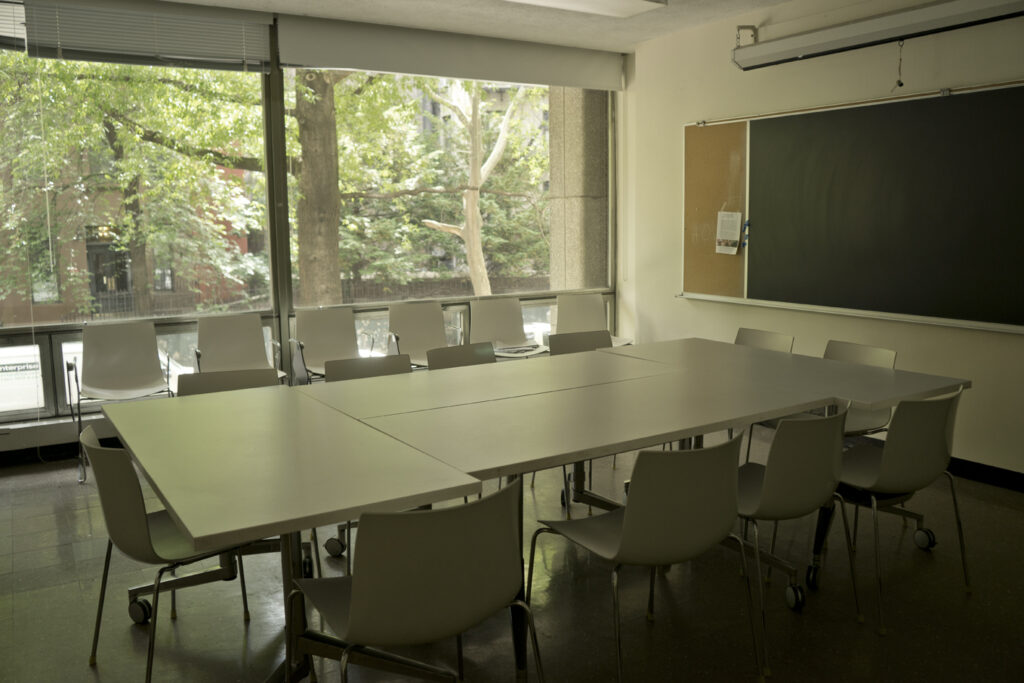
At its best the lights are off, as daylight pours in from 11th Street, through a wall of glass, to illuminate the excessive whiteness of the rigid room’s remaining three walls. A vertical divide between the two largest windows serves as the sole reminder of the materiality of the glass, which, though the room sits only on the second floor, transforms it into something of a temporary cave, if not a treehouse, in the greener months. The marked symmetry suggests an intentional screen or canvas, and outside two plain stone pillars frame the spectacle for the day: familiar dog-walkers, or an empty street following the first snowfall of the season, excitement at which, having come from southern California, suffices to remind me where I am.
When one remains a second semester, one witnesses the rapid return of ginkgo leaves and longer days, which is to say that the wall of windows—that imperceptible boundary between school and city whereby our campus becomes so huge—forces one to reflect on what one is doing and what one has accomplished, as when, for example, the light in late spring prompts one to recall an important discussion from a similar day in early autumn. If one never has class in Room 259, however, one must still encounter it outside as 65 W. 11th Street’s awkward façade reveals on the second floor an unconventional clerestory too low to the ground of a strange temple, whose windows declare that here there is nothing to hide: security guards notwithstanding, the place is open to the early passersby on the street who participate for a moment by their curious glances in the discussion developing above.
All this does not come so easily in basement closet classrooms. But in Room 259, even when a more beautiful day coincides with a less beautiful lesson, daydreams about leaving class and being elsewhere dissolve with the understanding that, by engaging in class on any day, being in New York is evidently what I am doing, to such an extent that when class ends, often it seems most sensible to stay in the room. In contrast, the insufferable basement classroom, by its stuffiness, puts students to sleep, which is to say that though the perfect space can do nothing for the indifferent student, a classroom conditions the course of discussion, just as the most beautiful empty room needs a full class to deliver it from its dormancy.
If all this seems obvious, then the primary problem is that we let the worst classrooms happen. But if it is unrealistic to have windows everywhere, then why don’t we celebrate enough the magnificence of Room 259, the windows we do have, too rare?
What do we lose when we forget to appreciate Room 259?
When students are not looking out the window, how does the dialogue between city and classroom contribute to an active discussion?
And is there ever a good reason—during the day, at least—to turn on the lights?
Noah Smolin
Student, Eugene Lang College The New School for Liberal Arts

